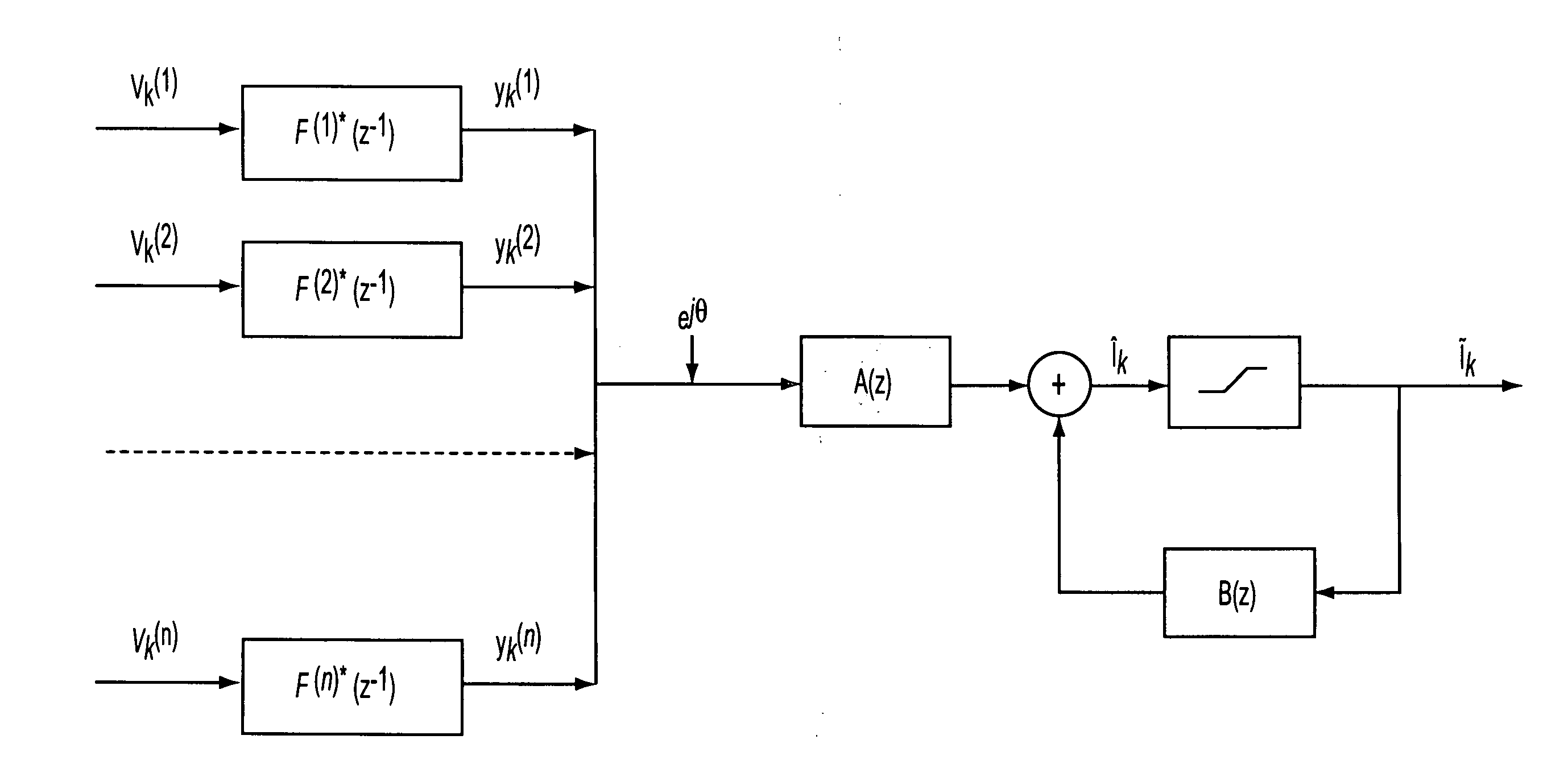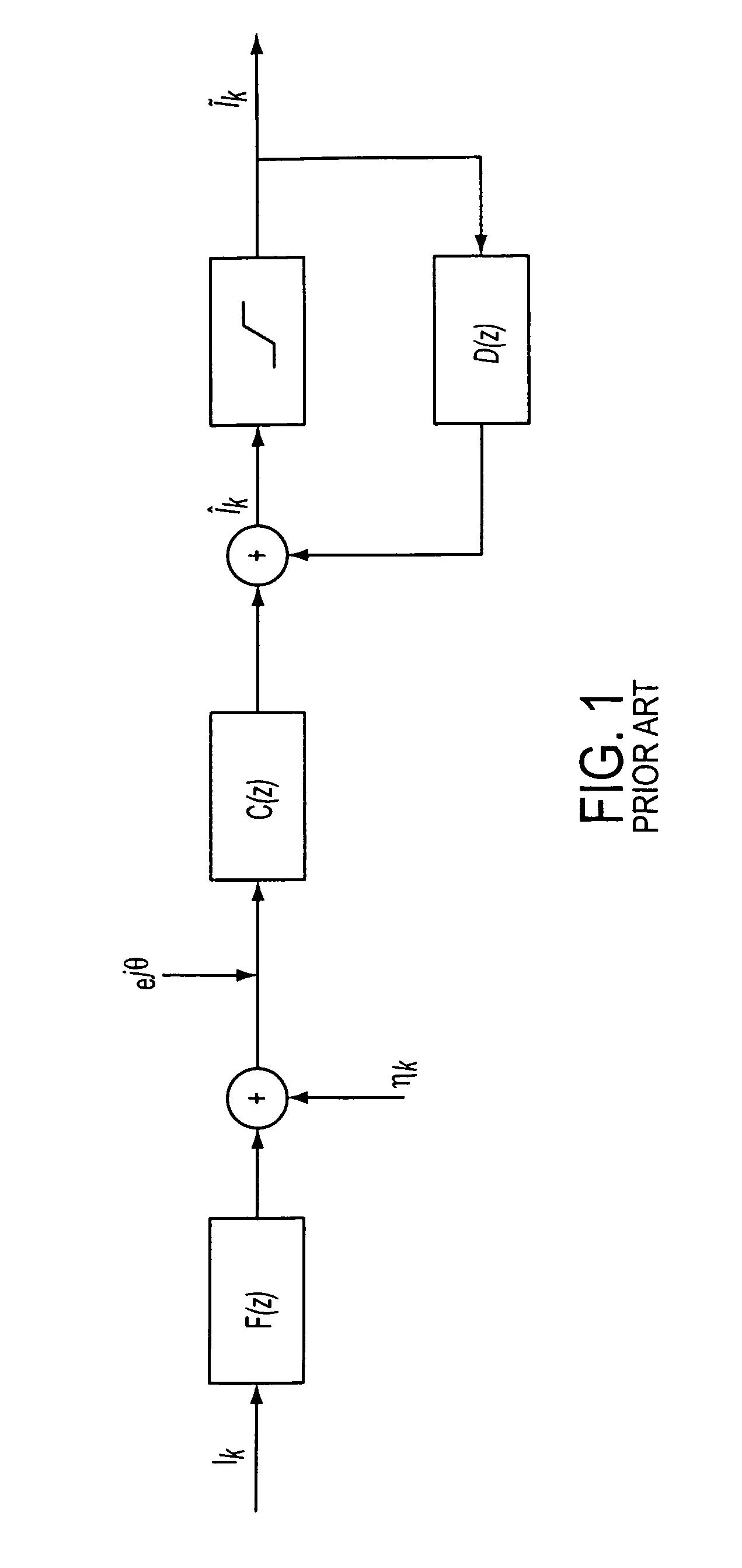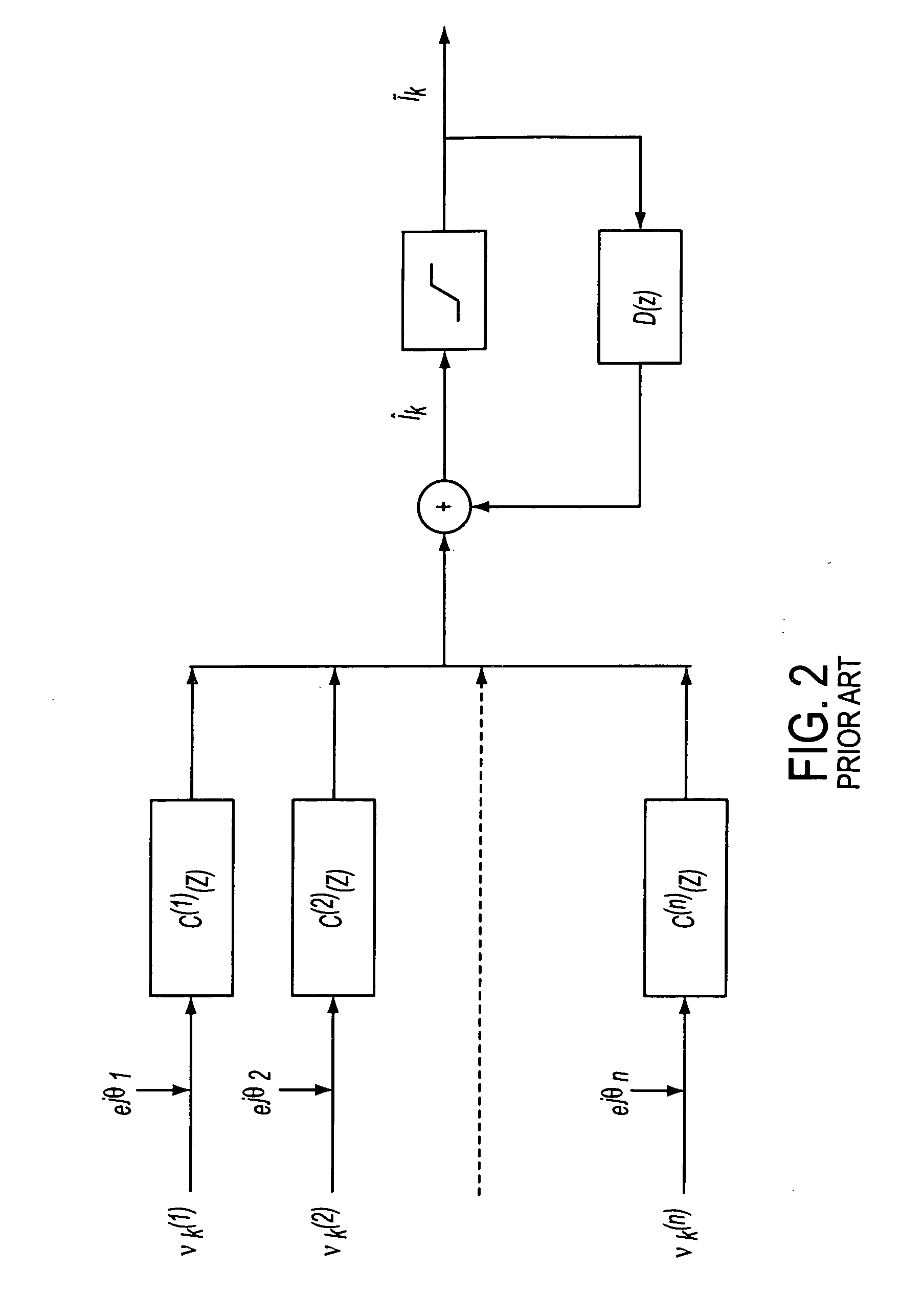Correlation based decision-feedback equalizer for underwater acoustic communications
a technology of acoustic communication and correlation, applied in the direction of sonic/ultrasonic/infrasonic transmission, electrical apparatus, transmission, etc., can solve the problems of inter-symbol interference (isi), the reliability of the equalizer in terms of bit error rate (ber) over a large number of packets, and the reliability gets worse, so as to achieve the receiver structure is simple and the effect of computationally simple and fas
- Summary
- Abstract
- Description
- Claims
- Application Information
AI Technical Summary
Benefits of technology
Problems solved by technology
Method used
Image
Examples
Embodiment Construction
[0044]FIG. 1 illustrates a single channel prior art DFE. FIG. 2 illustrates a multi-channel prior art DFE. FIG. 3 illustrates a DFE according to the invention. The differences between them are illustrated by the equations and discussions presented below.
Conventional DFE (Impulse Response Based DFE)
[0045] The received signal can be expressed in the base band as rj(t)∑nInhj(t-nT)+zj(t)(1)
where zj(t) represents band-limited noise, and hj represents a band-limited channel impulse response for the jth receiver, obtained by the convolution of the transmitter filter and / or receiver filter with the channel impulse response function. Taking one sample per symbol, one has vk=∑n=0LfnIk-n+ηk(2)
where {νk}, {ηk} are discrete received signal and noise sequences respectively with k bing sample index. {ƒn} is a discrete representation of the band limited impulse response function of length L+1. In the conventional equalizer, for a minimum phase channel, i.e. ƒn−1>ƒn, for n=1, . . . L,...
PUM
 Login to View More
Login to View More Abstract
Description
Claims
Application Information
 Login to View More
Login to View More - R&D
- Intellectual Property
- Life Sciences
- Materials
- Tech Scout
- Unparalleled Data Quality
- Higher Quality Content
- 60% Fewer Hallucinations
Browse by: Latest US Patents, China's latest patents, Technical Efficacy Thesaurus, Application Domain, Technology Topic, Popular Technical Reports.
© 2025 PatSnap. All rights reserved.Legal|Privacy policy|Modern Slavery Act Transparency Statement|Sitemap|About US| Contact US: help@patsnap.com



